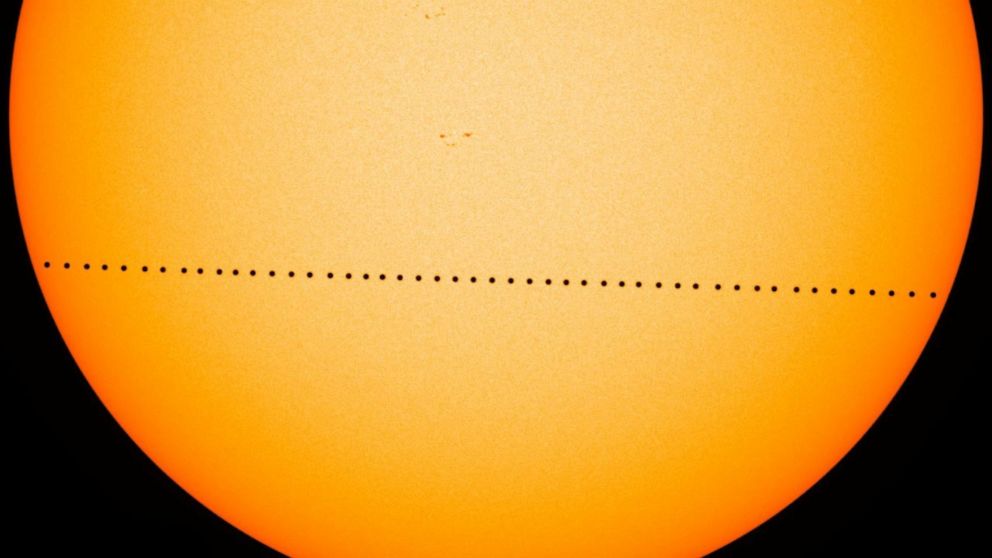Rare transit of Mercury: How to watch safely as the planet passes in front of the Sun
You'll need a specialized telescope to see the event -- and protect your eyes.
Mercury will pass in front of the sun on Monday, appearing as a dark spot moving across the star’s bright surface.
The cosmic event, which is called a transit, will last for roughly 5.5 hours and started at 7:35 a.m. ET.

Unlike a solar eclipse, you can’t see Mercury’s transit with the naked eye. But stargazers have to take precautions.
NASA recommends heading to a local astronomy club to use a “specialized, properly-filtered solar telescope.”
"You cannot use a regular telescope or binoculars in conjunction with solar viewing glasses,” according to NASA.
Mercury in transit is a major event, and a rare one. We won’t be able to see the transit again until 2032.
If you can’t make it to your local astronomy club, NASA’s Solar Dynamics Observatory will be posting close-up images of the transit, and Slooh is livestreaming the event.






